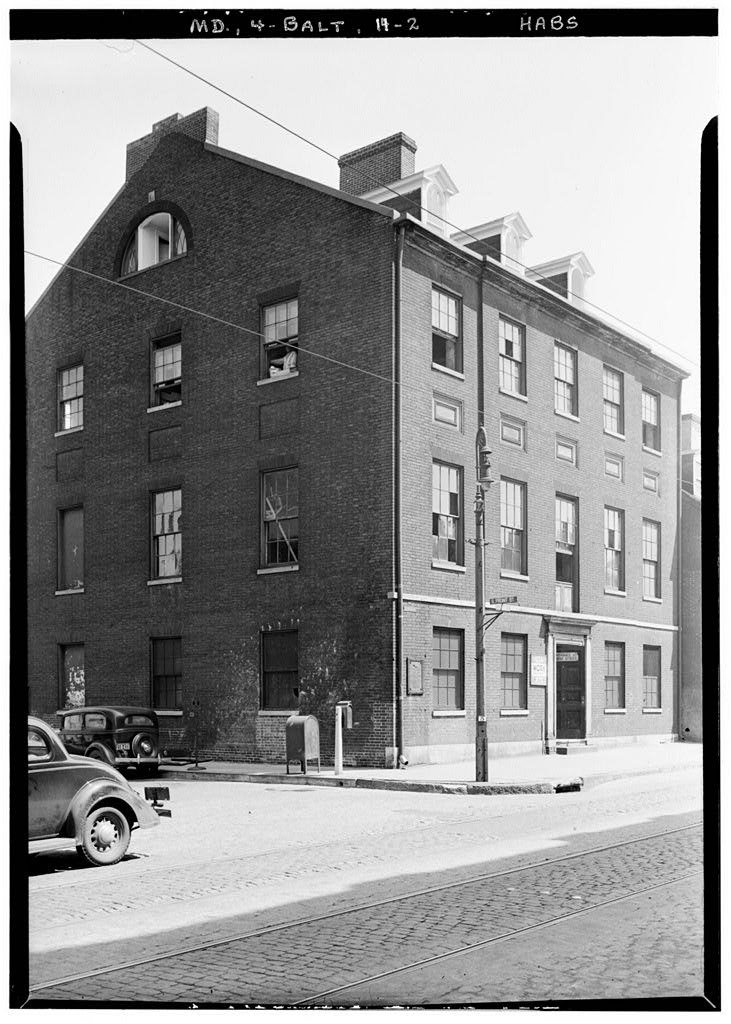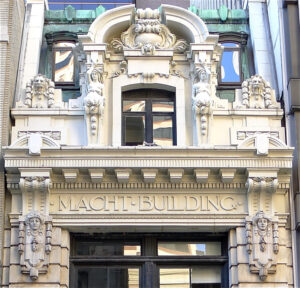
Image courtesy Library of Congress HABS
The last home of the last surviving signer of the Declaration of Independence, you’re often overlooked by locals, historians, and tourists.
It’s an unfair fate. You were the palatial final home of Maryland’s most important Founding Father and you are the most successful example of adaptive reuse in Baltimore City. While your adaptive reuses lack the pizzazz of being used as a bomb shelter like the Phoenix Shot Tower, you provided crucial space and sanctuary to struggling peoples and communities for a century while retaining your architectural allure.
Charles Carroll of Carrollton was a hero of the American Revolution. Roman Catholic, he was subjected to systemic discrimination. Catholic education was banned in Maryland, and he was forced to study abroad for years. He was subjected to double taxation and denied the right to vote or hold office before the American Revolution because of his religious faith. He, along with Samuel Chase and Benjamin Franklin, led the first attempt at covert regime change in American history. He was the sole Catholic signer of the Declaration of Independence. In 1789, Carroll was elected and became one of the United States’ first Catholic senators. He later founded and laid the cornerstone of the B&O Railroad.
After Carroll’s granddaughter sold you to the Sisters of Mercy in 1855, the Sisters first rented you to and then resold you to Jacob Seeger, a German brewer who immigrated to the United States shortly before Carroll’s death. Seeger sublet you to a wide variety of clientele.
You became tenement housing. The 1900 Census shows that the Neistadt family—Moses, Anna, and their six children—lived in a single room of the Carroll Mansion. Overall, according to the 1900 census, at least thirty people lived in the Carroll Mansion at the time.
Over time, you transformed from a tenement house into a garment factory. Initially, you were populated by small manufacturers- sweatshops- that rented a room, packed it with equipment, and then “sweated” poorly-paid laborers to produce goods. Eventually, you became home to the Louis Marcus Corporation, whose machinery stained your floor.
In the midst of all this, you were also home to a furniture store, a tailor shop, and a synagogue. You later became a campaign headquarters for a mayoral candidate.
After public activism to secure your preservation, Baltimore City government purchased you in 1914. In 1919, you became a vocational school, whose principal assured the public that you would not house “delinquents, incorrigibles or the subnormal.” The students learned mechanical and printing stills until the school moved to new quarters in 1928.
In 1929, you transformed again, this time into Mr. Fisher’s, a recreation center popular with children from the Little Italy and Jonestown neighborhoods. For over a generation, you provided a place where recreation, job training, and craft classes occurred. A late 1930s report to the National Youth Administration shows that the children made swords, guns, knives, and 48 deliciously-named “peanut parrots.” You also were a source of instruction about venereal diseases.
In the 1950s, Jonestown was declared a slum and the neighborhood was clear cut to make room for housing projects. With fewer children around to patronize your recreation center, it was closed in 1954.
For over a decade, you remained officially unused. There are rumors that a poultry seller acquired access to you and stored his products—live turkeys—in the Mansion.
In 1964, Theodore McKeldin was elected mayor on a platform that included restoring the Carroll Mansion. After considering converting you into a mayoral home, he ultimately decided your best use would be as a museum. After a fine restoration, you became, on 5 July 1967, the house museum you are today.
-Matt Hood
When not researching the history of the Carroll Mansion, Matt Hood is working on a history of the Phoenix Shot Tower.
Submit your own Love Letter today! Visit http://baltimorearchitecture.org/love-letters-to-baltimore-buildings/ for more details.


